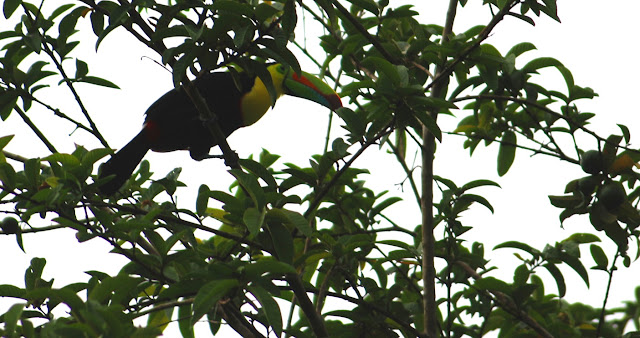A few weeks ago I was going through some of my paintings with a critical eye, looking for something that I could improve upon. I came across this 16x20" Black Bear inspired by a scene above Goose Creek. I did a post or two about it while I was working on this painting. I remember it well because it gave me fits trying to make it look right. It partly represents the beginning of the great creative downfall that has plagued me for the last few years.
First the trees just would not come out the way that I wanted them to. Then I could not paint the bear right to save my life. Finally I left it as is, feeling utterly defeated. I never sent it to an art gallery or showed it anywhere. It was just good enough to avoid being painted over entirely.
This time I decided to change species. I added another tree to help cover up part of the bear and roughed out the shape of a lynx.
A detail of the alterations that I started to make.
The next time that I found some time to work on the painting I refined the new tree and the lynx's body. Then I sketched out the cat's face.
At the next sitting I started to refine the cat's dour face. So far this lynx has been so much easier to paint than the bear ever was.
I also decided to refine the forest floor in the foreground.
Yesterday morning I finished the new version. The title of the painting has changed from, Goose Creek Bear, to, The Rabbit Hunter. It looks better to me, and perhaps more importantly, I felt some real enthusiasm for painting. I can only hope that the feeling lasts.
Although this is a closer photo, it does not show the real detail of the painting.
First the trees just would not come out the way that I wanted them to. Then I could not paint the bear right to save my life. Finally I left it as is, feeling utterly defeated. I never sent it to an art gallery or showed it anywhere. It was just good enough to avoid being painted over entirely.
This time I decided to change species. I added another tree to help cover up part of the bear and roughed out the shape of a lynx.
A detail of the alterations that I started to make.
The next time that I found some time to work on the painting I refined the new tree and the lynx's body. Then I sketched out the cat's face.
At the next sitting I started to refine the cat's dour face. So far this lynx has been so much easier to paint than the bear ever was.
I also decided to refine the forest floor in the foreground.
Yesterday morning I finished the new version. The title of the painting has changed from, Goose Creek Bear, to, The Rabbit Hunter. It looks better to me, and perhaps more importantly, I felt some real enthusiasm for painting. I can only hope that the feeling lasts.
Although this is a closer photo, it does not show the real detail of the painting.



















































